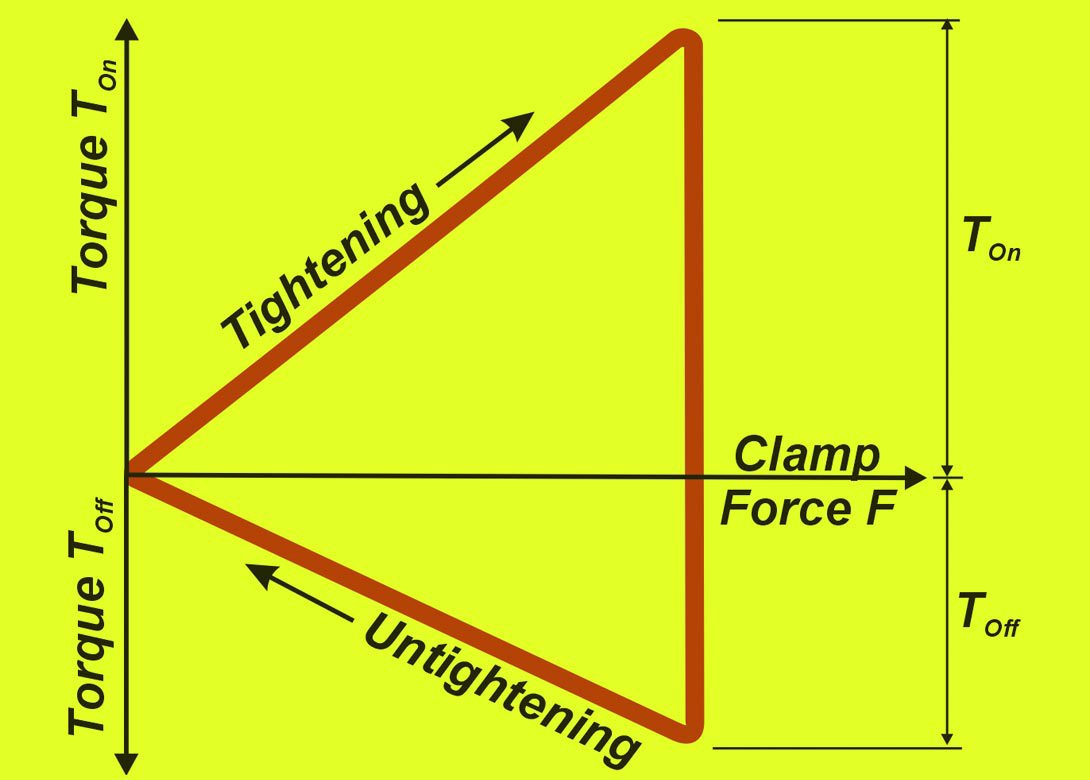
By Bill Eccles, Bolt Science
A frequent question that is asked relating to bolting is: ‘We’ve just checked a nut that we tightened and it’s well below what we tightened it to just minutes earlier – what’s wrong?’
It’s not widely known that the torque for a newly tightened nut or threaded fastener, in general, is different depending upon whether you attempt to untighten it or tighten it a bit more. Typically the torque needed to untighten a newly tightened fastener is around 10% to 30% less than the torque to tighten it further.
When you are tightening a threaded fastener a significant amount of torque is needed to overcome friction in the threads and under the nut face (or the bolt head, if the bolt is rotated). The proportion of the torque that is used to overcome friction depends upon the friction value but is typically in the 85% to 90% region. This is illustrated in Figure one, which shows that when tightening a nut/bolt with a coefficient of friction of 0.12, only about 14% of the torque is used to stretch the fastener producing the clamp load with 86% of the torque being lost overcoming friction. The torque needed to stretch the fastener always acts in the untightening direction and it’s for this reason that the untightening torque is less than the tightening torque.
Click here to download the full Technical Article (PDF).
Ref: FFM151410/20
Originally published in Fastener + Fixing Technology Issue 15, October – December 2014.

Biog
Will joined Fastener + Fixing Magazine in 2007 and over the last 15 years has experienced every facet of the fastener sector - interviewing key figures within the industry and visiting leading companies and exhibitions around the globe.
Will manages the content strategy across all platforms and is the guardian for the high editorial standards that the Magazine is renowned.







